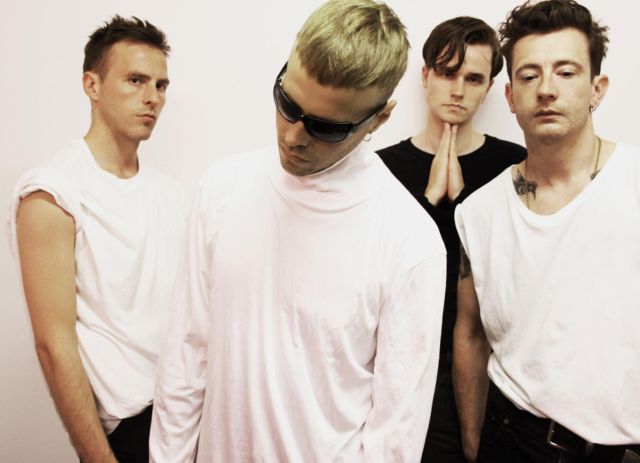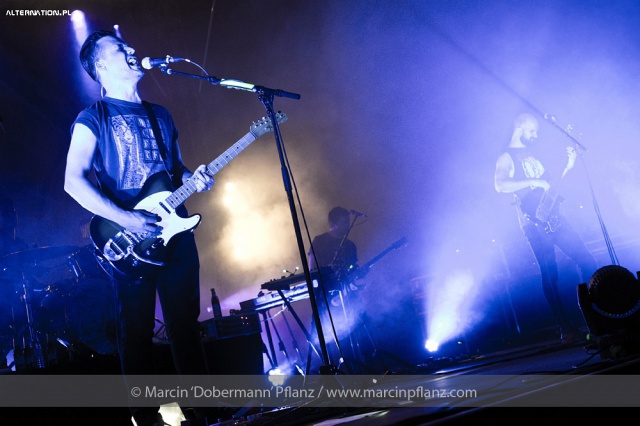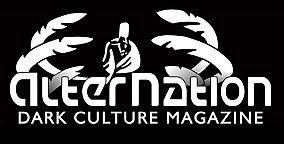Post-punk
Post-punk is a rock music movement with its roots in the late 1970s, following on the heels of the initial punk rock explosion of the mid-1970s. The genre retains its roots in the punk movement but is more introverted, complex and experimental. It found a firm place in the 1980s independent scene, and led to the development of genres such as gothic rock, industrial music and alternative rock.
Post-punk began in the late 1970s and persisted into the early 1980s. Contrary to what the name would imply, post-punk really developed along side and with punk rock as opposed to after punk's initial 1977 boom. However, because it was a much less limited genre sonically, post-punk did enjoy a significantly longer lifespan than the rock and roll revivalism of the Sex Pistols, the Ramones, etc. While punk itself soon came to have a signature sound, a few acts began to experiment with more challenging musical structures, lyrical themes, and a self-consciously art-based image, while retaining punk's initial iconoclastic stance.
Musically, post-punk is fairly diverse, though there are some important genre identifiers, most of which derive from krautrock, dub reggae, the work of progressive-thinking garage rock groups like The Velvet Underground, Roxy Music, and Hawkwind, and other avant-garde and world musics. Most post-punk features a very prominent bass guitar, some use of electronic instrumentation, jagged, angular guitar work and melodies, highly poetic lyrics, and a generally intellectual attitude towards the proceedings derived from art rock, although none of these are necessarily requirements. Post-punk was largely produced in North America and the British Isles, and key groups from those regions include Pere Ubu, Gang of Four, Siouxsie and the Banshees, Wire, Mission of Burma, and Joy Division, among countless others. There also was a worldwide post-punk following which produced bands like France's Metal Urbain, Australia's The Birthday Party, The Church and Tactics, and Ireland's U2 and the Virgin Prunes.
Bands such as Crass also came within the scope of post-punk, as with several outfits formed in the wake of traditionally punk rock groups: Magazine was formed by a member of Buzzcocks, for instance, and Public Image Ltd. derived from the Sex Pistols. A list of predecessors to the post-punk genre of music might include Television, whose album Marquee Moon, although released in 1977 at the height of the punk movement, is considered by some definitively post-punk in style. Other groups, such as The Clash, remained predominantly punk in nature, yet were inspired by the experimentalism of the post-punk movement, most notably in their album Sandinista!.
The original post-punk movement ended as the bands associated with the movement turned away from its aesthetics, just as post-punk bands had originally left punk rock behind in favor of new sounds, critically acclaimed but never particularly commercially successful. Bands who began playing post-punk only found mass commercial success once they excised the more difficult elements of their sound in favor of sonic elements associated with pop and dance music. Many post-punk bands, most notably The Cure and Siouxsie and the Banshees, evolved into gothic rock (formerly a style of the larger post-punk movement) and became identified with the goth subculture. Some shifted to a more commercial new wave sound (such as Talking Heads), while others were fixtures on American college radio and became early examples of alternative rock (such as U2). Post-punk was immensely influential; its various facets spawning, influencing and inspiring Britain's independent label infrastructure, the goth subculture, massively internationally popular groups like the previous mentioned U2, The Smiths, R.E.M., and Red Hot Chili Peppers, post-punk's own pop-friendly cousin new wave, the post-hardcore music of the late 1980s and 1990s, among other things and styles.
From the late 1990s to the new millenium, a second wave of post-punk emerged, incorporing sounds and aesthetic of the original post-punk, along with influences new wave and, at times, of dance music. This wave, commonly known as "post-punk revival" either draw particular influence from the more angular strain of post-punk such as Wire and Gang of Four or are more clearly indebted to the atmospheric wing of post-punk epitomized by Echo & The Bunnymen and Joy Division.
An extensive list of post-punk, post-punk influenced and post-punk revival bands can be found here.
Artists belong to the genre
 |
This Cold |
Country: Polska / Poland / Date of establishing : 2013 |
 |
This Eternal Decay |
Country: Włochy / Italy / Date of establishing : 2018 |
 |
Traitrs |
Country: Kanada / Canada / Date of establishing : 2015 |
 |
Twin Tribes |
Country: Teksas / Texas / Date of establishing : 2017 |
 |
Ulterior |
Country: Wielka Brytania / United Kingdom / Date of establishing : 2006 |
 |
White Lies |
Country: Wielka Brytania / United Kingdom / Date of establishing : 2007 |
